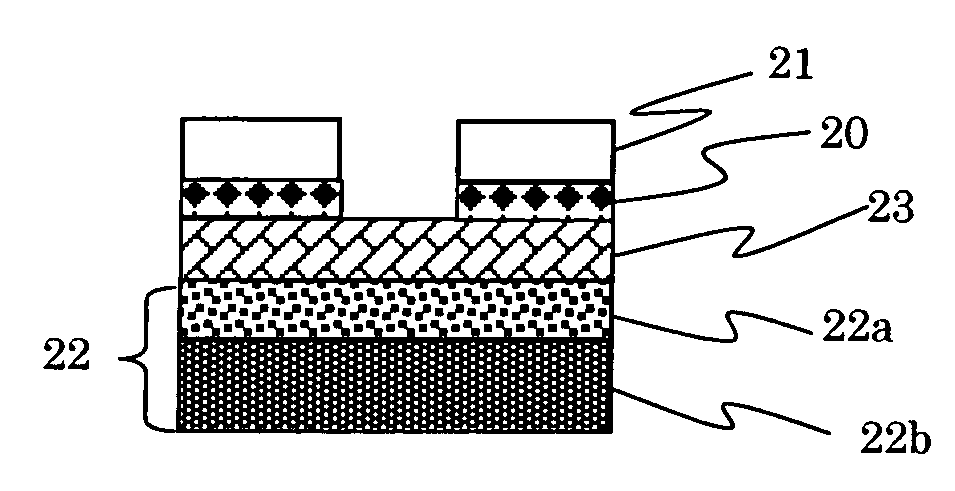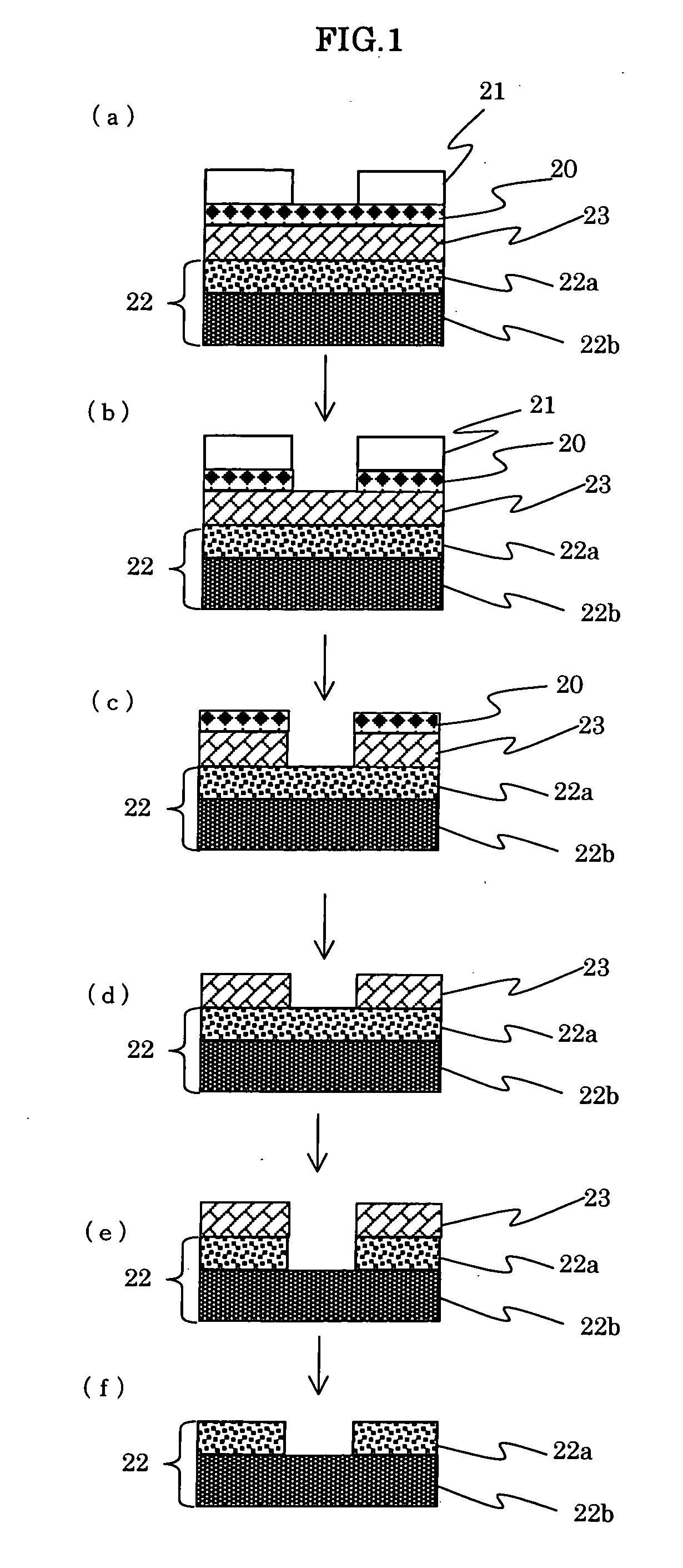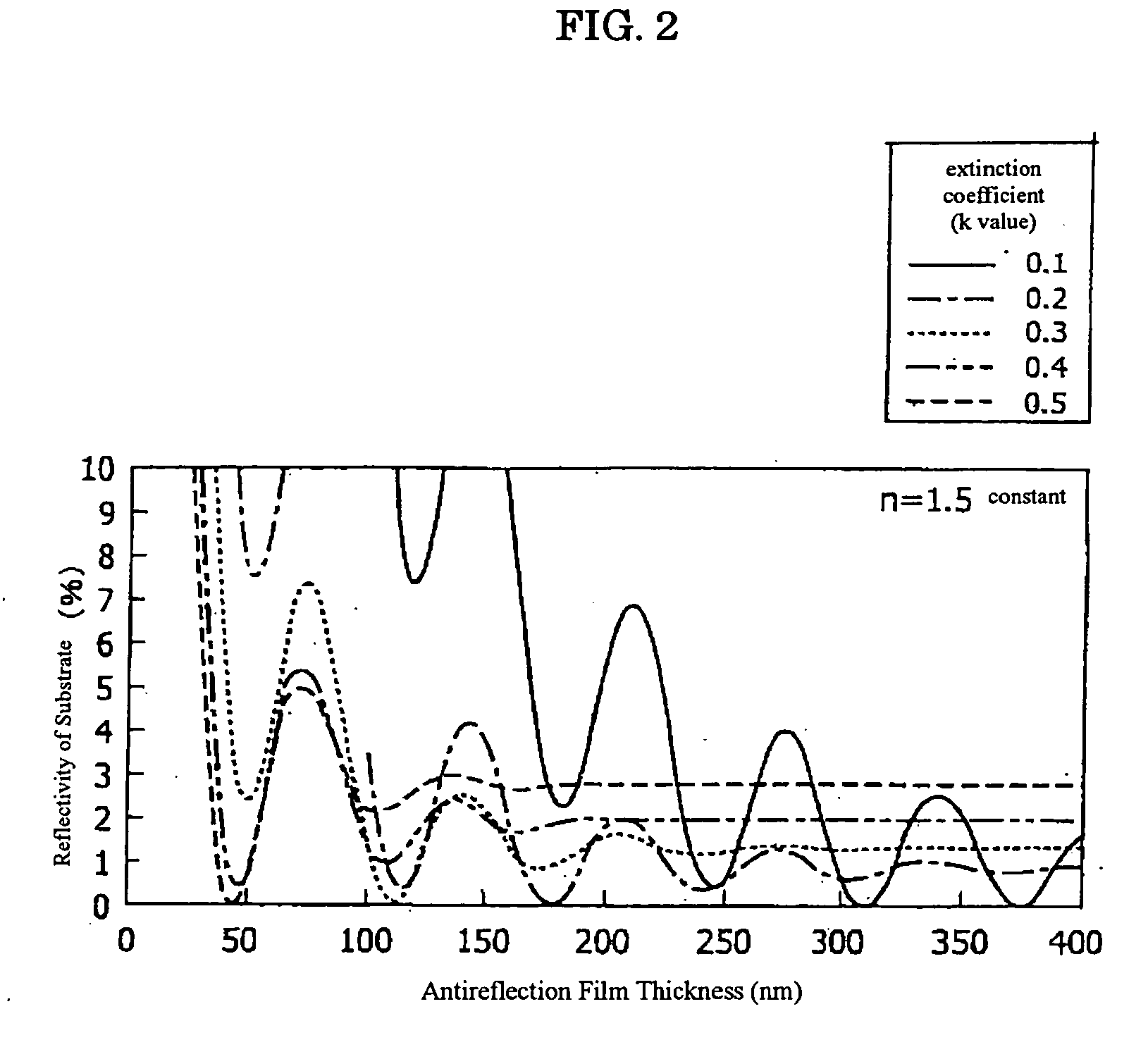Antireflection film composition, patterning process and substrate using the same
- Summary
- Abstract
- Description
- Claims
- Application Information
AI Technical Summary
Benefits of technology
Problems solved by technology
Method used
Image
Examples
production example 1
[0236] In a 1 liter flask, 57.2 g of 3,4-epoxycyclohexyl ethyl trimethoxy silane, 11.8 g of phenyl trimethoxy silane, 4.4 g of titanium propoxide, and 200 g of ethanol were placed. And 16.9 g of ultra pure water was added thereto. This solution was stirred at 60 degrees C. for an hour, and then 30 g of acetylacetone and 300 g of propylene glycol monomethyl ether acetate were added thereto. The solution was stirred for 2 hours at 100 degrees C. with evaporation. Then the solution was concentrated under a reduced pressure (10 hPa) to obtain a 234 g solution of polymer 1. Among the solution, solid contents were 60.1 g.
production example 2
[0237] In a 1 liter flask, 49.2 g of 3,4-epoxycyclohexyl ethyl trimethoxy silane, 11.8 g of phenyl trimethoxy silane, 24.6 g of titanium propoxide, and 200 g of ethanol were placed. And 20.2 g of ultra pure water was added thereto. This solution was stirred at 60 degrees C. for an hour, and then 30 g of acetylacetone and 300 g of propylene glycol monomethyl ether acetate were added thereto. The solution was stirred for 2 hours at 100 degrees C. with evaporation. Then the solution was concentrated under a reduced pressure (10 hPa) to obtain a 252 g solution of polymer 2. Among the solution, solid contents were 67.4 g.
production example 3
[0238] In a 1 liter flask, 29.3 g of 3,4-epoxycyclohexyl ethyl trimethoxy silane, 11.6 g of phenyl trimethoxy silane, 75.7 g of titanium propoxide, and 200 g of ethanol were placed. And 28.8 g of ultra pure water was added thereto. This solution was stirred at 60 degrees C. for an hour, and then 30 g of acetylacetone and 300 g of propylene glycol monomethyl ether acetate were added thereto. The solution was stirred for 2 hours at 100 degrees C. with evaporation. Then the solution was concentrated under a reduced pressure (10 hPa) to obtain a 288 g solution of polymer 3. Among the solution, solid contents were 85.0 g.
PUM
| Property | Measurement | Unit |
|---|---|---|
| Fraction | aaaaa | aaaaa |
| Fraction | aaaaa | aaaaa |
| Fraction | aaaaa | aaaaa |
Abstract
Description
Claims
Application Information
 Login to View More
Login to View More - R&D
- Intellectual Property
- Life Sciences
- Materials
- Tech Scout
- Unparalleled Data Quality
- Higher Quality Content
- 60% Fewer Hallucinations
Browse by: Latest US Patents, China's latest patents, Technical Efficacy Thesaurus, Application Domain, Technology Topic, Popular Technical Reports.
© 2025 PatSnap. All rights reserved.Legal|Privacy policy|Modern Slavery Act Transparency Statement|Sitemap|About US| Contact US: help@patsnap.com



